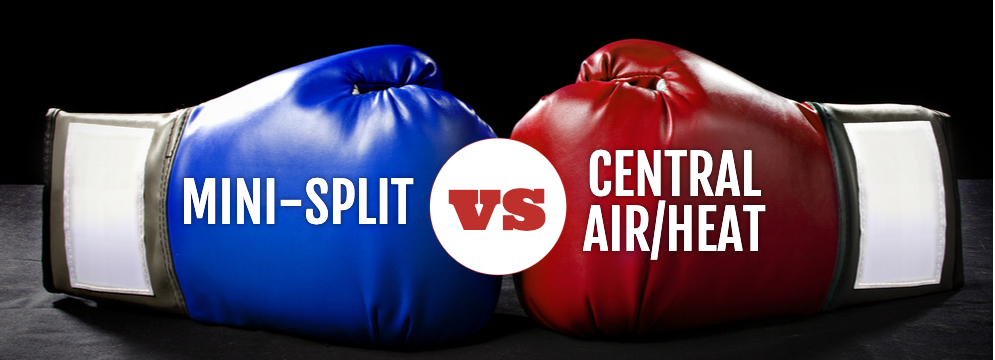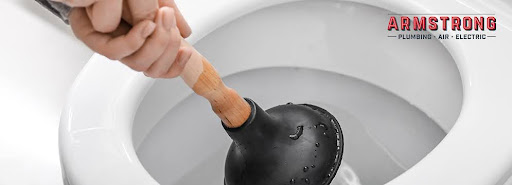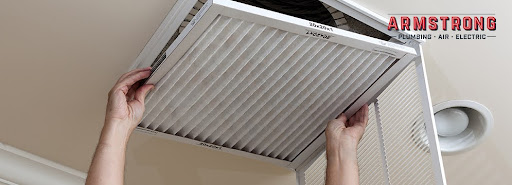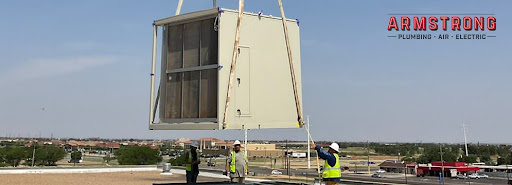The main thing to remember about a central air and a mini split HVAC system is that they both do the same thing: heat and cool your home. While that may sound over simplistic, we mention it here to remind our customers that there is no one-size-fits-all heating and cooling solution. Traditional central air systems may be the best option for some folks, while a mini split system could be a perfect fit for others. Armstrong Plumbing, Air & Electric can help you with both HVAC options, so we think it’s a good idea to talk about the differences between the two and the pros & cons.
CENTRAL AIR
A central air heating and cooling system consists of an outdoor compressor/condenser that is connected to an indoor furnace and air handler, which is normally installed in the attic, basement or garage. Cooled and heated air is forced through the home via ductwork and directional vents. Air is also returned through the system to be heated and cooled. The system is generally controlled by a single thermostat.
MINI SPLIT
A mini split system also utilizes an outdoor compressor/condenser and an indoor air handling unit; the similarities generally end there. There is no ductwork required in a mini split system; instead the outdoor unit can be connected to as many as 8 indoor units that can deliver cooled/heated air to individual rooms/areas. These indoor units are mounted on walls or ceilings and can be controlled individually.
PROS
Central Air
- Provides consistent temperature throughout home.
- Distributed via the return system and air filters, which helps to purify the air and maintain humidity levels.
- One-step programming via the central thermostat.
Mini Split
- Small size and easy installation. Because there is no ductwork required, the outdoor unit is connected to the indoor units via small holes in the wall, allowing for conduit connection.
- Zoning flexibility and efficiency. Each individual indoor unit may be programmed to turn on/off, depending on your home’s requirements. This means that areas that do not need heating or cooling are not wasting energy.
CONS
Central Air
- Ductwork leaks and maintenance. The ductwork system requires cleaning/inspection on a regular basis. Also, studies estimate that as much as 20 to 30 percent of the air circulated through ductwork leaks out.
- Distributes airborne pollutants and allergens throughout home.
- More costly to operate.
Mini Split
- Cost. Mini split system equipment can cost up to 30 percent more than central heating and cooling equipment.
- Aesthetics. The appearance of multiple air handlers throughout the home may be unsightly to some.
ARMSTRONG PLUMBING, AIR & ELECTRIC
In the final analysis, both central air and mini split systems are viable options for heating and cooling your Lubbock, Texas home or business. If you’re looking for a more traditional HVAC system and are replacing a system with in-place ductwork, the central air option may be the best. If you’re building from the ground up – with no ductwork – or you are adding on or renovating a particular space, the mini split may be the way to go. Call us today to find out more about our complete line of Lennox central air system options and our Mitsubishi and Daikin mini split solutions.








